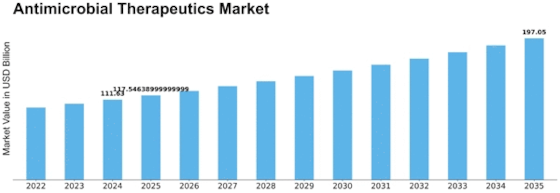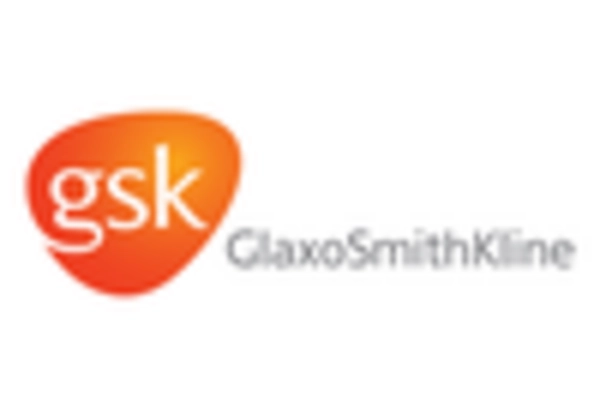Antimicrobial Therapeutics Size
Antimicrobial Therapeutics Market Growth Projections and Opportunities
The market for antimicrobial therapeutics is an important player in this industry; it fights against infectious diseases by providing drugs that fight microbial infections. This implies that there are different kinds of anti-infectives like antiprotozoals, antivirals and antibiotics which hinder the growth or destroy the various microorganisms like bacteria, viruses, fungi and parasites. The global market for antimicrobial therapeutics has witnessed impressive growth due to emergence of new infectious diseases, antibiotic resistance and lack of effective treatment options.
The ongoing threat posed by infectious diseases worldwide is a major factor behind the massive expansion of this market. These include respiratory tract infections, UTIs and skin conditions among others that continue to drive up demand for antimicrobial therapeutics. Besides there are drug-resistant strains developing everyday thus necessitating to undertake continuous research and development (R&D) that can offer effective treatments.
Antibiotic resistance is now a critical issue in healthcare industry that has forced researchers to refocus on new development strategies for anti-microbials. As a result, because traditional antibiotics have become less useful as they no longer treat drug-resistant organisms leading to increased morbidity/mortality rates. In response AMT still invests into research aimed at discovering entirely new types of antibiotics which will be able to bypass resistance mechanism thereby creating more robust tools for managing infection by healthcare providers.
Geographically, the market for antimicrobial therapeutics shows growth across different regions such as North America, Europe and Asia Pacific which have significant stakes here. Such areas benefit from strong healthcare infrastructure including presence of research facilities among others high incidences infectious disorders. What’s more in these areas medical attention should be available timely and efficient than in any other place making them most pronounced.
Moreover, today’s Antimicrobial Therapeutic Market sees a move towards personalized medicine approaches. In other words one would be selective about whom to treat based on certain patient traits such as genetics or immune response when using antimicrobials thus raising its specificity and eventually increasing its efficacy Therefore this new approach aims at optimizing treatment outcomes while minimizing side-effects as well as reducing chances of drug resistance.
The competitive landscape in the antimicrobial therapeutics market is dominated by large pharmaceutical companies who spend a lot on research and development (R&D) for new medicines. For example, they collaborate with academic institutions and research organizations to find novel antimicrobial compounds and formulations. Majority of businesses use strategic partnerships or acquisitions to enhance their portfolios and broaden their market coverage.


















Leave a Comment